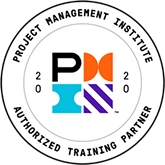Business Analyst Essentials
- Traditional Classroom: 3-day
- Virtual Instructor-led: Six 3-hour sessions
Business Analyst Essentials is a well-rounded introduction to the role of the business analyst. The course is intended to serve several audiences and meet a variety of needs. The material in the course is directed at both the novice looking to enter the field and the self-taught veteran looking to fill gaps in his or her skills or knowledge.
The course is aligned with A Guide to the Business Analysis Body of Knowledge® (BABOK® Guide) and provides a high-level overview of all the BABOK® Guide knowledge areas.
Target Audience
Individuals who will benefit from this course include business analysts, project managers, individuals with business analysis responsibilities, and key stakeholders who want to better understand the business analyst role.
Learning Objectives
- Describe the role and responsibilities of the business analyst.
- Describe the purpose of each BABOK® Guide knowledge area.
- Describe key tasks, inputs, outputs, tools, and techniques for each of the BABOK® Guide knowledge areas.
- Define key terms and principles fundamental to understanding business analysis.
- Identify business initiative needs through strategy analysis.
- Plan for business analysis.
- Describe the requirements life cycle.
- Compare and contrast common requirement elicitation techniques.
- Become familiar with common requirements documentation/modeling techniques.
- Evaluate solutions in meeting requirements.
Course Outline
Module 1: Key Concepts: Business Analysis Roles and Responsibilities
- Overview of Business Analysis and the Business Analyst Role
- Requirement Types
- Properties of Effective Requirements
- Introduction to IIBA® and the BABOK® Guide
- Exercise: Identify Requirements-Related Challenges
Module 2: Strategy Analysis
- Strategy Analysis and the Business Analyst Role
- Strategic Planning and Project Selection
- Analyze Current State
- Business Needs
- Enterprise Architecture
- Case Study Overview: Scenic Hotels Case Study
- SWOT Analysis
- Define Future State
- Goals and Objectives
- Business Case
- Exercise: Identify and Quantify Benefits for the Case Study
- Assess Risks
- Risk Analysis
- Define Change Strategy
- Modeling Solution Scope – Use Case and Context Diagrams
Module 3: Business Analysis Planning and Monitoring
- Business Analysis Planning and Monitoring and the Business Analyst Role
- Plan Business Analysis Approach
- Exercise: Identify Requirements-Related Risks
- Plan Stakeholder Engagement
- Exercise: Analyze Stakeholders for the Case Study
- Exercise: Determine Communication Needs for the Case Study
- Plan Business Analysis Governance
- Elements of the Business Analysis Plan
- Plan Business Analysis Information Management
- Requirements Attributes
- Identify Business Analysis Performance Improvements
- Requirements Attribute Report
Module 4: Requirements Life Cycle Management
- Requirements Life Cycle Management and the Business Analyst Role
- Trace Requirements
- Backward and Forward Traceability
- Maintain Requirements
- Agile Backlog Management
- Requirements Reuse
- Prioritize Requirements
- Criteria and Models for Prioritizing
- Agile Prioritization Techniques
Module 5: Elicitation and Collaboration
- Elicitation and Collaboration and the Business Analyst Role
- Communication Styles
- Exercise: Assess Communication StylesRequirements Reuse
- Applying Elicitation Techniques
- Brainstorming
- Requirements Workshop
- Exercise: Design a Requirements Workshop
- Facilitation Skills
- Exercise: Perform a Requirements Workshop
- Interviewing
- Exercise: Conduct Interview
- Survey
- Observation
- Prototyping
- Additional Elicitation Techniques
- Selecting Elicitation and Collaboration Techniques
- Selection Criteria
- Exercise: Select Elicitation Techniques
- Delivering the Requirements Package
- Requirements Presentation
- Requirements Reviews
Module 6: Requirements Analysis and Design Definition
- Requirements Analysis and Design Definition and the Business Analyst Role
- Using Modeling Techniques for Requirements Analysis and Design Definition
- Modeling Perspectives
- Modeling Techniques
- Applying Analysis Techniques
- Case Study: Parkview Public Library
- Context Diagram
- Exercise: Develop a Context Diagram
Module 6: Requirements Analysis and Design Definition (cont.)
- Applying Analysis Techniques (cont.)
- Use Case Diagram
- Exercise: Develop a Use Case Diagram
- Use Case Description
- Exercise: Write a Use Case Description
- Activity Diagram
- Process Analysis
- Exercise: Develop a Swim Lane Diagram and SIPOC
- Model Selection Guidelines
- Use Case Diagram
Module 7: Solution Evaluation
- Solution Evaluation and the Business Analyst Role
- Solution Testing and Evaluation
- User Story Acceptance
- End to End Business Testing
- Production Integration Validation
- Solution Evaluation Tasks
- Measure Solution Performance
- Analyze Performance Measures
- Assess Solution Limitations
- Assess Enterprise Limitations
- Recommend Actions to Increase Solution Value
Module 8: Agile Connection
- Hierarchy and Sequence of Techniques and Models
- Exercise: Crete a Complete Business to Agile Package
Course Wrap-Up
- Course Summary
- Exercise: Review Requirements Related Challenges
BAV311a Course Code
For more information on this topic, as well as how Corporate Education Group can help power your organization’s performance, contact us via email or call 1.800.288.7246 (US only) or +1.978.649.8200. You can also use our Information Request Form!






